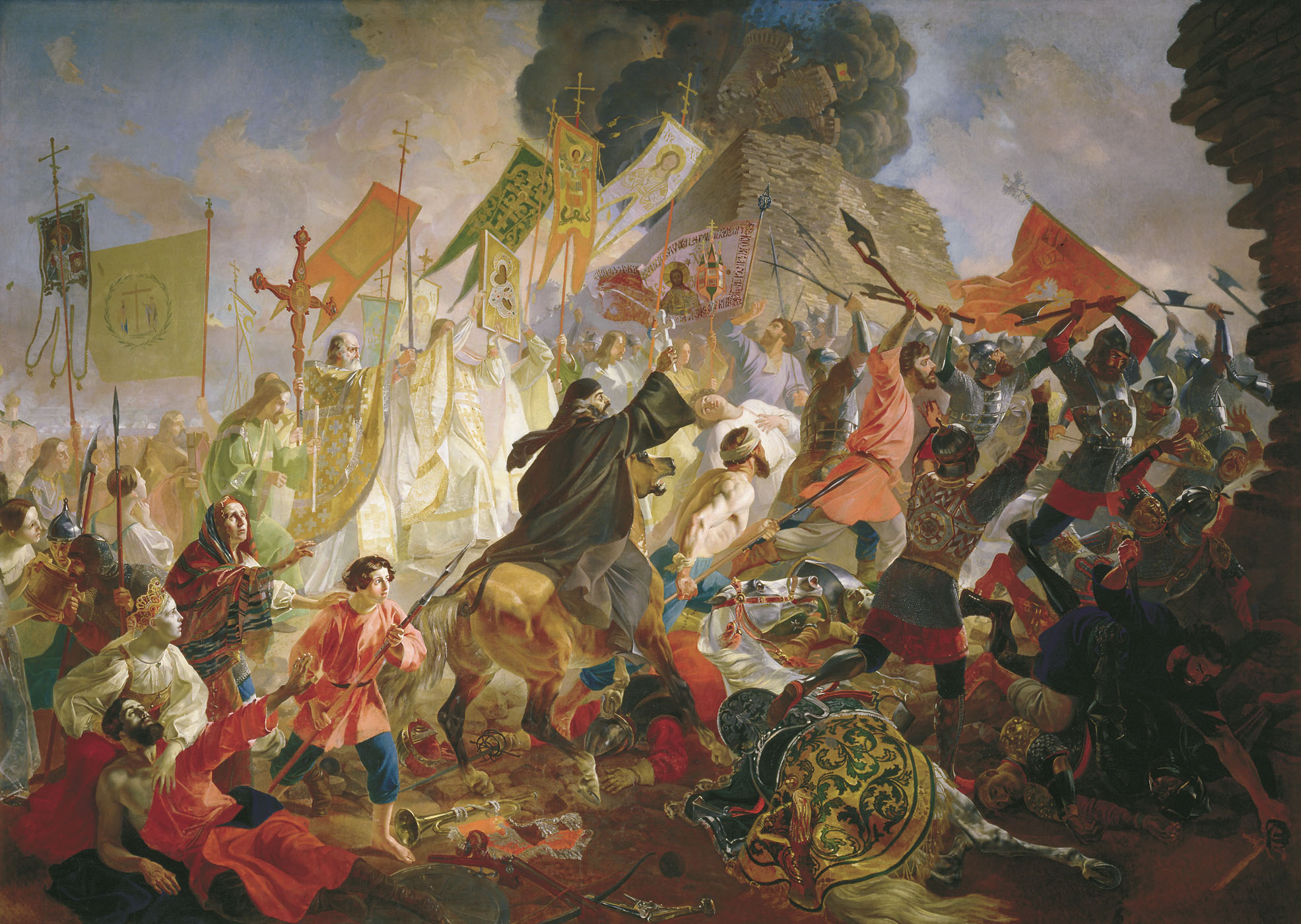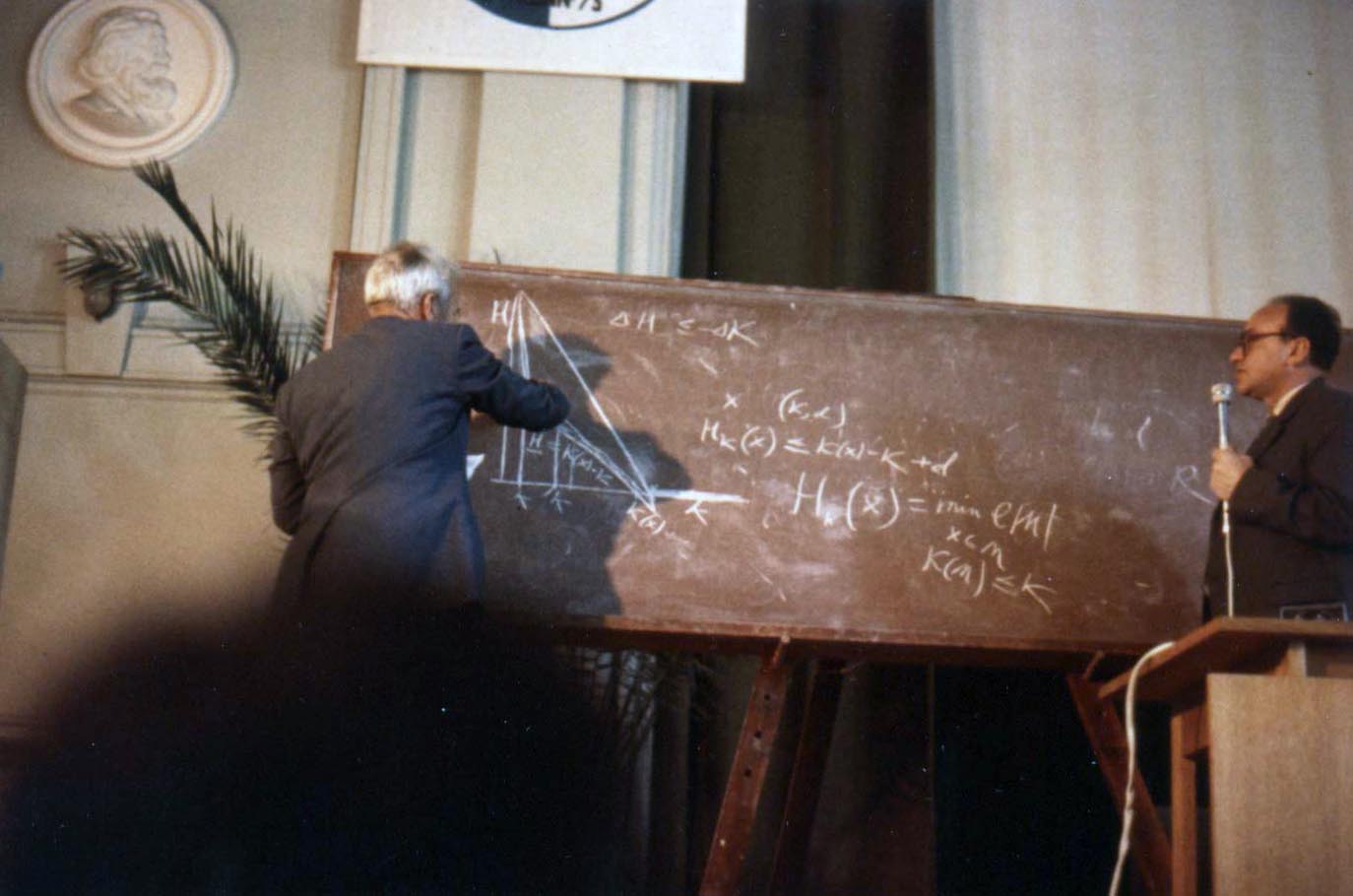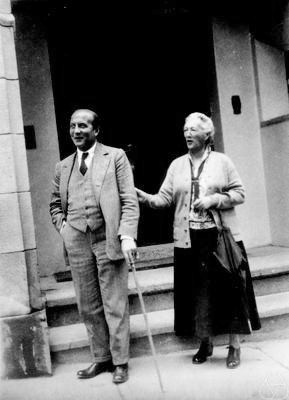|
Nikolai Shanin
Nikolai Aleksandrovich Shanin (Russian: Николай Александрович Шанин) was a Soviet and Russian mathematician and the founder of a school of constructive mathematics in Leningrad (now Saint Petersburg). He was born on May 25, 1919, in Pskov, Russia, to a family of doctors and passed away on September 17, 2011, in Saint Petersburg, Russia. His father, Alexander Protasyevich Shanin (Russian: Александр Протасьевич Шанин, 1886–1973), was a well-known specialist in skin cancer. In 1935, N. A. Shanin entered the Faculty of Mathematics and Mechanics at Leningrad State University and began his PhD studies there in 1939. Andrey Andreyevich Markov, Jr. became his supervisor, while his second supervisor was Pavel Sergeyevich Alexandrov. Markov’s ideas and personality had a decisive influence on the development of Shanin’s research interests. In 1942, he defended his PhD dissertation, “On the Extension of Topological Spaces,” and ... [...More Info...] [...Related Items...] OR: [Wikipedia] [Google] [Baidu] |
Pskov
Pskov ( rus, Псков, a=Ru-Псков.oga, p=psˈkof; see also Names of Pskov in different languages, names in other languages) is a types of inhabited localities in Russia, city in northwestern Russia and the administrative center of Pskov Oblast, located about east of the Estonian border, on the Velikaya, Velikaya River. Population: Pskov is one of the oldest cities in Russia. During the Middle Ages, it served as the capital of the Pskov Republic and was a trading post of the Hanseatic League before it was incorporated into the Grand Duchy of Moscow and became an important border fortress in the Tsardom of Russia. History Early history Pskov is one of the oldest cities in Russia. The name of the city, originally Pleskov (historic Russian spelling , ), may be loosely translated as "[the town] of :wikt:purling, purling waters". It was historically known in English as Plescow. Its earliest mention comes in 903, which records that Igor of Kiev married a local lady, Olga ... [...More Info...] [...Related Items...] OR: [Wikipedia] [Google] [Baidu] |
Andrey Kolmogorov
Andrey Nikolaevich Kolmogorov ( rus, Андре́й Никола́евич Колмого́ров, p=ɐnˈdrʲej nʲɪkɐˈlajɪvʲɪtɕ kəlmɐˈɡorəf, a=Ru-Andrey Nikolaevich Kolmogorov.ogg, 25 April 1903 – 20 October 1987) was a Soviet mathematician who played a central role in the creation of modern probability theory. He also contributed to the mathematics of topology, intuitionistic logic, turbulence, classical mechanics, algorithmic information theory and Analysis of algorithms, computational complexity. Biography Early life Andrey Kolmogorov was born in Tambov, about 500 kilometers southeast of Moscow, in 1903. His unmarried mother, Maria Yakovlevna Kolmogorova, died giving birth to him. Andrey was raised by two of his aunts in Tunoshna (near Yaroslavl) at the estate of his grandfather, a well-to-do Russian nobility, nobleman. Little is known about Andrey's father. He was supposedly named Nikolai Matveyevich Katayev and had been an Agronomy, agronomist. Katayev ha ... [...More Info...] [...Related Items...] OR: [Wikipedia] [Google] [Baidu] |
1919 Births
Events January * January 1 ** The Czechoslovak Legions occupy much of the self-proclaimed "free city" of Bratislava, Pressburg (later Bratislava), enforcing its incorporation into the new republic of Czechoslovakia. ** HMY Iolaire, HMY ''Iolaire'' sinks off the coast of the Hebrides; 201 people, mostly servicemen returning home to Lewis and Harris, are killed. * January 2–January 22, 22 – Russian Civil War: The Red Army's Caspian-Caucasian Front begins the Northern Caucasus Operation (1918–1919), Northern Caucasus Operation against the White Army, but fails to make progress. * January 3 – The Faisal–Weizmann Agreement is signed by Faisal I of Iraq, Emir Faisal (representing the Arab Kingdom of Hejaz) and Zionism, Zionist leader Chaim Weizmann, for Arab–Jewish cooperation in the development of a Jewish homeland in Palestine (region), Palestine, and an Arab nation in a large part of the Middle East. * January 5 – In Germany: ** Spartacist uprising in ... [...More Info...] [...Related Items...] OR: [Wikipedia] [Google] [Baidu] |
Russian Mathematicians
This list of Russian mathematicians includes the famous mathematicians from the Russian Empire, the Soviet Union and the Russian Federation. Alphabetical list __NOTOC__ A *Georgy Adelson-Velsky, inventor of AVL tree algorithm, developer of Kaissa, the first world computer chess champion *Sergei Adian, known for his work in group theory, especially on the Burnside problem *Aleksandr Danilovich Aleksandrov, Aleksandr Aleksandrov, developer of CAT(k) space and Alexandrov's uniqueness theorem in geometry *Pavel Alexandrov, author of the Alexandroff compactification and the Alexandrov topology *Dmitri Anosov, developed Anosov diffeomorphism *Vladimir Arnold, an author of the Kolmogorov–Arnold–Moser theorem in dynamical systems, solved Hilbert's 13th problem, raised the ADE classification and Arnold's rouble problems B *Alexander Beilinson, influential mathematician in representation theory, algebraic geometry and mathematical physics *Sergey Bernstein, developed the Bernstein p ... [...More Info...] [...Related Items...] OR: [Wikipedia] [Google] [Baidu] |
Sequent Calculus
In mathematical logic, sequent calculus is a style of formal logical argumentation in which every line of a proof is a conditional tautology (called a sequent by Gerhard Gentzen) instead of an unconditional tautology. Each conditional tautology is inferred from other conditional tautologies on earlier lines in a formal argument according to rules and procedures of inference, giving a better approximation to the natural style of deduction used by mathematicians than David Hilbert's earlier style of formal logic, in which every line was an unconditional tautology. More subtle distinctions may exist; for example, propositions may implicitly depend upon non-logical axioms. In that case, sequents signify conditional theorems of a first-order theory rather than conditional tautologies. Sequent calculus is one of several extant styles of proof calculus for expressing line-by-line logical arguments. * Hilbert style. Every line is an unconditional tautology (or theorem). * Gentzen s ... [...More Info...] [...Related Items...] OR: [Wikipedia] [Google] [Baidu] |
Anatol Slissenko
Anatol Slissenko (a former transliteration: Slisenko; Russian: Анатоль Олесьевич Слисенко), a Soviet, Russian and French mathematician and computer scientist, was born on August 15, 1941, in Siberia, where his father served as the commander of a regiment of military topography. In 1950 his parents moved to Leningrad. Research Source: In 1958 A.O. Slissenko entered the Faculty of Mathematics and Mechanics of Leningrad (now Saint Petersburg) State University. There he started his research in constructive mathematics (recursive analysis) under the supervision of Nikolai Shanin. Having graduated from the university in 1963, he became a researcher at the Leningrad Department of Steklov Mathematical Institute of the Academy of Sciences of the USSR (nowadays it is called slightly differently. He defended his PhD dissertation in constructive mathematics 1967, his superviser was Nikolai Shanin. In 1981 he defended his DSc dissertation at Steklov Mathematica ... [...More Info...] [...Related Items...] OR: [Wikipedia] [Google] [Baidu] |
Grigori Mints
Grigori Mints (June 7, 1939 – May 29, 2014) was a Russian philosopher and mathematician who worked in mathematical logic. He was born in Leningrad, in the Soviet Union (now St. Petersburg, Russia), and received his Ph.D. in 1965 from the Leningrad State University under Nikolai Aleksandrovich Shanin with a thesis entitled "On Predicate and Operator Variants for Building Theories of Constructive Mathematics". In 1990 he received his D.Sc. from Leningrad State University with a thesis entitled "Proof Transformations and Synthesis of Programs". He was a Stanford University professor. Since 1991, Grigori "Grisha" Mints was a professor of philosophy and, by courtesy, of mathematics and of computer science at Stanford University. Before joining Stanford, Mints held research positions at the Steklov Mathematical Institute, Leningrad University, and the Estonian Academy of Sciences. Considered one of the most distinguished logicians in the world, Mints was passionate about the applicat ... [...More Info...] [...Related Items...] OR: [Wikipedia] [Google] [Baidu] |
Computable Number
In mathematics, computable numbers are the real numbers that can be computed to within any desired precision by a finite, terminating algorithm. They are also known as the recursive numbers, effective numbers, computable reals, or recursive reals. The concept of a computable real number was introduced by Émile Borel in 1912, using the intuitive notion of computability available at the time. Equivalent definitions can be given using μ-recursive functions, Turing machines, or λ-calculus as the formal representation of algorithms. The computable numbers form a real closed field and can be used in the place of real numbers for many, but not all, mathematical purposes. Informal definition In the following, Marvin Minsky defines the numbers to be computed in a manner similar to those defined by Alan Turing in 1936; i.e., as "sequences of digits interpreted as decimal fractions" between 0 and 1: The key notions in the definition are (1) that some ''n'' is specified at the start ... [...More Info...] [...Related Items...] OR: [Wikipedia] [Google] [Baidu] |
David Hilbert
David Hilbert (; ; 23 January 1862 – 14 February 1943) was a German mathematician and philosopher of mathematics and one of the most influential mathematicians of his time. Hilbert discovered and developed a broad range of fundamental ideas including invariant theory, the calculus of variations, commutative algebra, algebraic number theory, the foundations of geometry, spectral theory of operators and its application to integral equations, mathematical physics, and the foundations of mathematics (particularly proof theory). He adopted and defended Georg Cantor's set theory and transfinite numbers. In 1900, he presented a collection of problems that set a course for mathematical research of the 20th century. Hilbert and his students contributed to establishing rigor and developed important tools used in modern mathematical physics. He was a cofounder of proof theory and mathematical logic. Life Early life and education Hilbert, the first of two children and only son of O ... [...More Info...] [...Related Items...] OR: [Wikipedia] [Google] [Baidu] |
Church–Turing Thesis
In Computability theory (computation), computability theory, the Church–Turing thesis (also known as computability thesis, the Turing–Church thesis, the Church–Turing conjecture, Church's thesis, Church's conjecture, and Turing's thesis) is a wiktionary:thesis, thesis about the nature of computable functions. It states that a function (mathematics), function on the natural numbers can be calculated by an effective method if and only if it is computable by a Turing machine. The thesis is named after American mathematician Alonzo Church and the British mathematician Alan Turing. Before the precise definition of computable function, mathematicians often used the informal term ''effectively calculable'' to describe functions that are computable by paper-and-pencil methods. In the 1930s, several independent attempts were made to formal system, formalize the notion of computability: * In 1933, Kurt Gödel, with Jacques Herbrand, formalized the definition of the class of general ... [...More Info...] [...Related Items...] OR: [Wikipedia] [Google] [Baidu] |
Markov's Principle
Markov's principle (also known as the Leningrad principle), named after Andrey Markov Jr, is a conditional existence statement for which there are many equivalent formulations, as discussed below. The principle is logically valid classically, but not in intuitionistic constructive mathematics. However, many particular instances of it are nevertheless provable in a constructive context as well. History The principle was first studied and adopted by the Russian school of constructivism, together with choice principles and often with a realizability perspective on the notion of mathematical function. In computability theory In the language of computability theory, Markov's principle is a formal expression of the claim that if it is impossible that an algorithm does not terminate, then for some input it does terminate. This is equivalent to the claim that if a set and its complement are both computably enumerable, then the set is decidable. These statements are provable in cla ... [...More Info...] [...Related Items...] OR: [Wikipedia] [Google] [Baidu] |
Kurt Gödel
Kurt Friedrich Gödel ( ; ; April 28, 1906 – January 14, 1978) was a logician, mathematician, and philosopher. Considered along with Aristotle and Gottlob Frege to be one of the most significant logicians in history, Gödel profoundly influenced scientific and philosophical thinking in the 20th century (at a time when Bertrand Russell,For instance, in their "Principia Mathematica' (''Stanford Encyclopedia of Philosophy'' edition). Alfred North Whitehead, and David Hilbert were using logic and set theory to investigate the foundations of mathematics), building on earlier work by Frege, Richard Dedekind, and Georg Cantor. Gödel's discoveries in the foundations of mathematics led to the proof of his completeness theorem in 1929 as part of his dissertation to earn a doctorate at the University of Vienna, and the publication of Gödel's incompleteness theorems two years later, in 1931. The incompleteness theorems address limitations of formal axiomatic systems. In parti ... [...More Info...] [...Related Items...] OR: [Wikipedia] [Google] [Baidu] |






